How to Make Buttermilk
- By Jennifer Segal
- Updated January 2, 2025
- 20 Comments
- Leave a Review

This post may contain affiliate links. Read my full disclosure policy.
Forgot to buy buttermilk or don’t want to buy a whole carton when you only need a small amount? Learn how to make buttermilk with two simple ingredients!
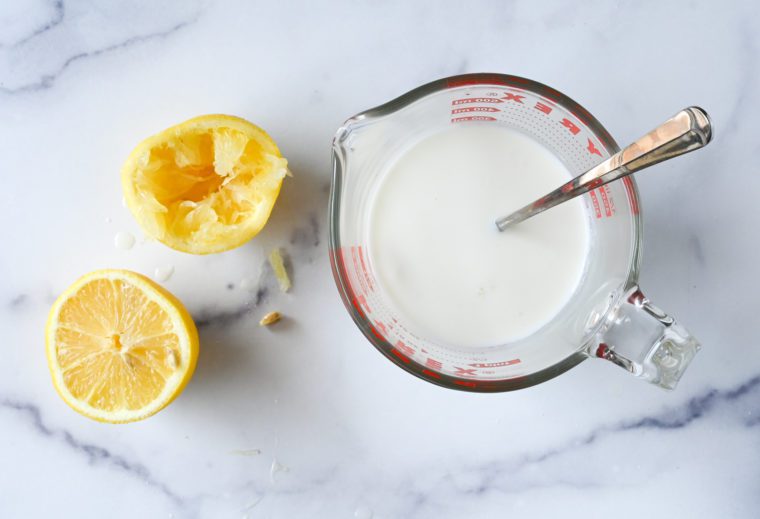
Did you forget to add buttermilk to your shopping list? Or do you hesitate to buy store-bought buttermilk when you only need half a cup for a recipe? You’re not alone and the good news is you can easily make your own. The process of how to make buttermilk is simple. It requires just 2 ingredients, and you’re likely to have both of them in your kitchen already.
What Is Buttermilk?
In the old days, buttermilk was the fermented liquid that remained after cream was churned into butter. Now, the buttermilk you buy at the supermarket is regular milk that has active cultures/good bacteria added to it. This creates a chemical reaction that causes the milk to thicken and develop a signature tangy flavor. When added to baking recipes, buttermilk adds a subtle, pleasant tang and also improves texture, moisture, and color. Additionally, it reacts with baking soda in baked goods to make cakes, cupcakes, muffins, waffles, and biscuits rise.
“This must be the best kept secret in cooking… You have solved my issue of never having any around when needed. So simple, so good. Thank you.”
What You’ll Need To Make Buttermilk
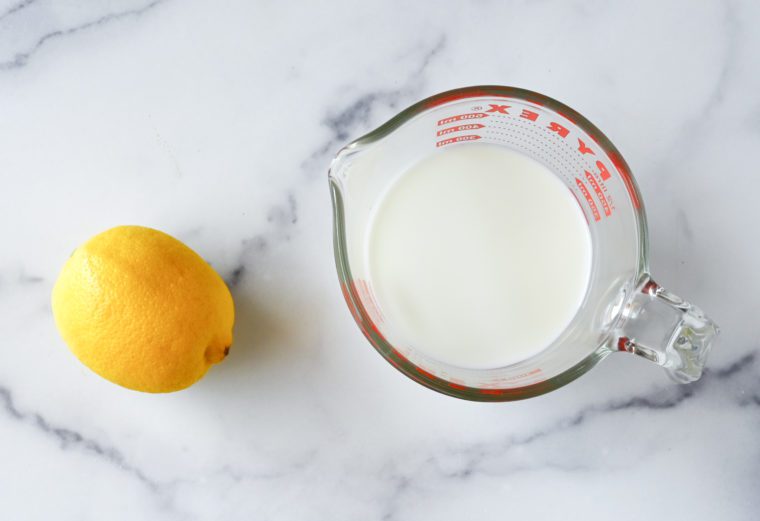
- Milk: Skim, 2%, and Whole Milk Are All Fine
- Fresh Lemon Juice Or White Vinegar: Contrary to its name, white vinegar is actually clear.
- Jump to the printable recipe for precise measurements
Step-By-Step Instructions
Add 1 tablespoon of lemon juice or vinegar to a liquid measuring cup. Pour milk to the 1-cup line (use this same ratio of lemon juice/vinegar to milk when you need more or less than 1 cup of buttermilk). Stir to combine the liquids.

Let the mixture sit for about 10 minutes. You’ll begin to see small curdled bits in the mixture; this means it’s ready to add to the recipe. Note that homemade buttermilk is not cultured and thick like store-bought. Even if you don’t see much change in the appearance of the mixture, the acid has been added to your milk and it will work just like real buttermilk in most recipes.
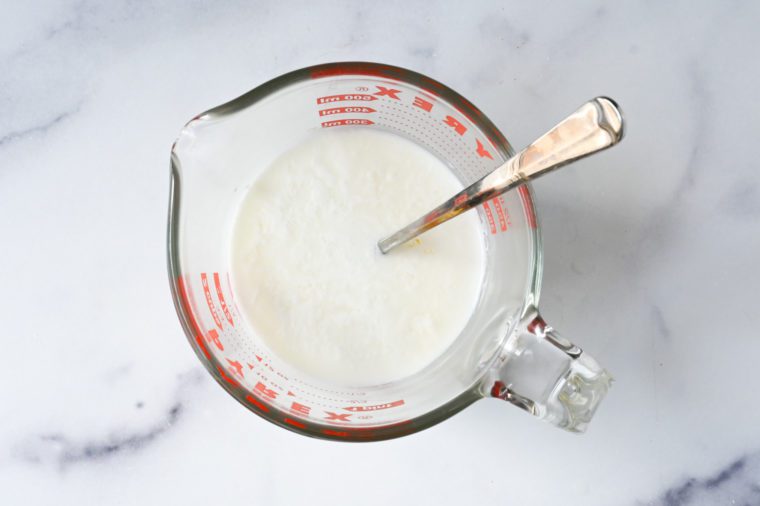
Other Useful Tips
- If you need to use dairy-free milk (i.e., almond, soy, or oat milk), that’s fine; you’ll use the same ratio of vinegar/lemon juice to milk and follow the same steps.
- You can freeze buttermilk for up to 3 months. If you’d like to freeze it in smaller portions, put 1 to 2 tablespoons in an ice cube tray and pop it into the freezer for an hour or so. Once it’s frozen, seal the buttermilk cubes in an airtight container.
- Given the limited amount of lemon juice/vinegar that you can add to milk without negatively impacting flavor, homemade buttermilk will not get as thick and creamy as store-bought, but it will still behave in the same way when used for baking.
If you need less than 1 cup of buttermilk, here are some helpful ratios:
1/4 cup buttermilk = ¾ teaspoon lemon juice/vinegar plus 1/4 cup milk
1/3 cup buttermilk = 1 teaspoon lemon juice/vinegar plus 1/3 cup milk
1/2 cup buttermilk = 1½ teaspoons lemon juice/vinegar plus 1/2 cup milk
2/3 cup buttermilk = 2 teaspoons lemon juice/vinegar plus 2/3 cup milk
3/4 cup buttermilk = 2¼ teaspoons lemon juice/vinegar plus 3/4 cup milk
You May Also Like
Homemade Buttermilk

Forgot to buy buttermilk or don’t want to buy a whole carton when you only need a small amount? Learn how to make buttermilk with two simple ingredients!
Ingredients
- 1 tablespoon lemon juice or white vinegar
- 1 cup minus 1 tablespoon milk, any kind
Instructions
- Add 1 tablespoon of lemon juice or vinegar to a measuring cup.
- Pour milk to the 1-cup line (use this same ratio of lemon juice/vinegar to milk when you need more or less than 1 cup of buttermilk). Stir to combine the liquids.
- Let the mixture sit for about 10 minutes. You’ll begin to see small curdled bits in the mixture; this means it’s ready to add to the recipe. Even if you don’t see much change in the appearance of the mixture, the acid has been added to your milk and will work just like the store-bought version.
See more recipes:
Comments
Add a Comment Cancel reply
This site uses Akismet to reduce spam. Learn how your comment data is processed.
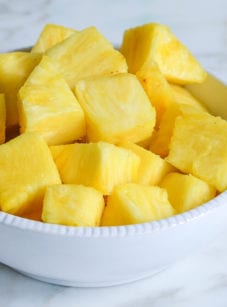
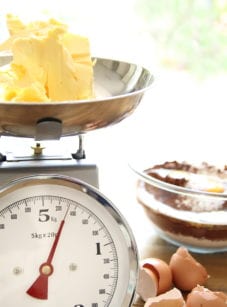
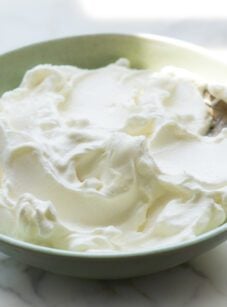
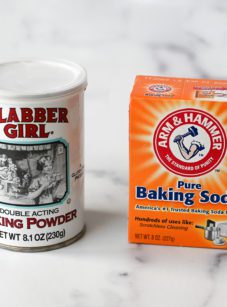
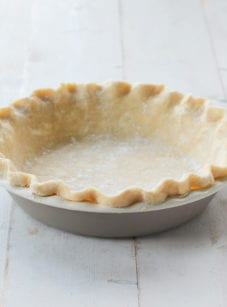

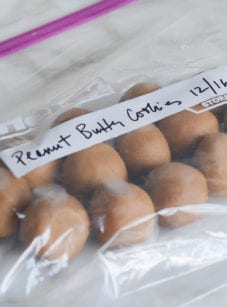
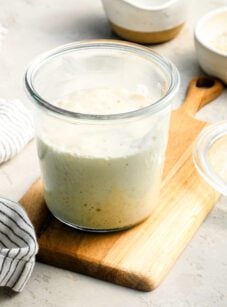
Happy to see this…I’m so tired of buying buttermilk for a small amount and then having the rest hang around the fridge….thanks Jen for the tip!
Would this method work with Almond milk or oat milk?
Yep, it’s fine to use a non-dairy milk. Just keep in mind that it’ll mimic the tang, but it won’t thicken quite the same way and may be a bit thinner than real buttermilk.